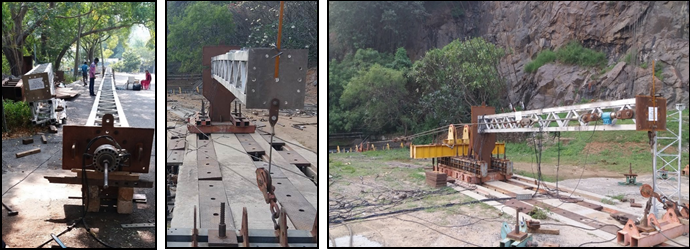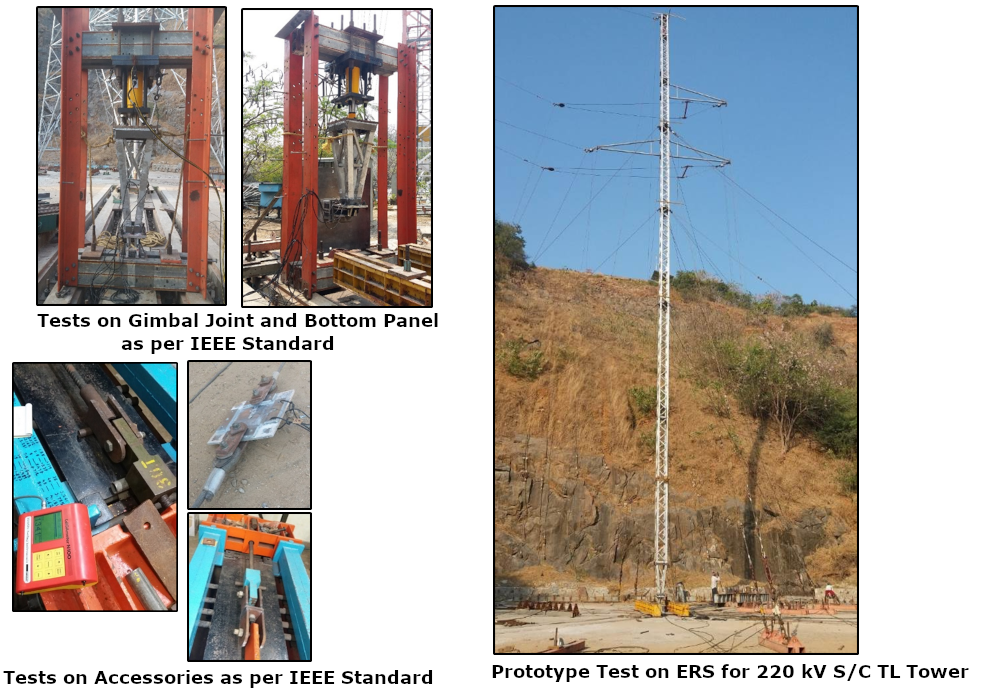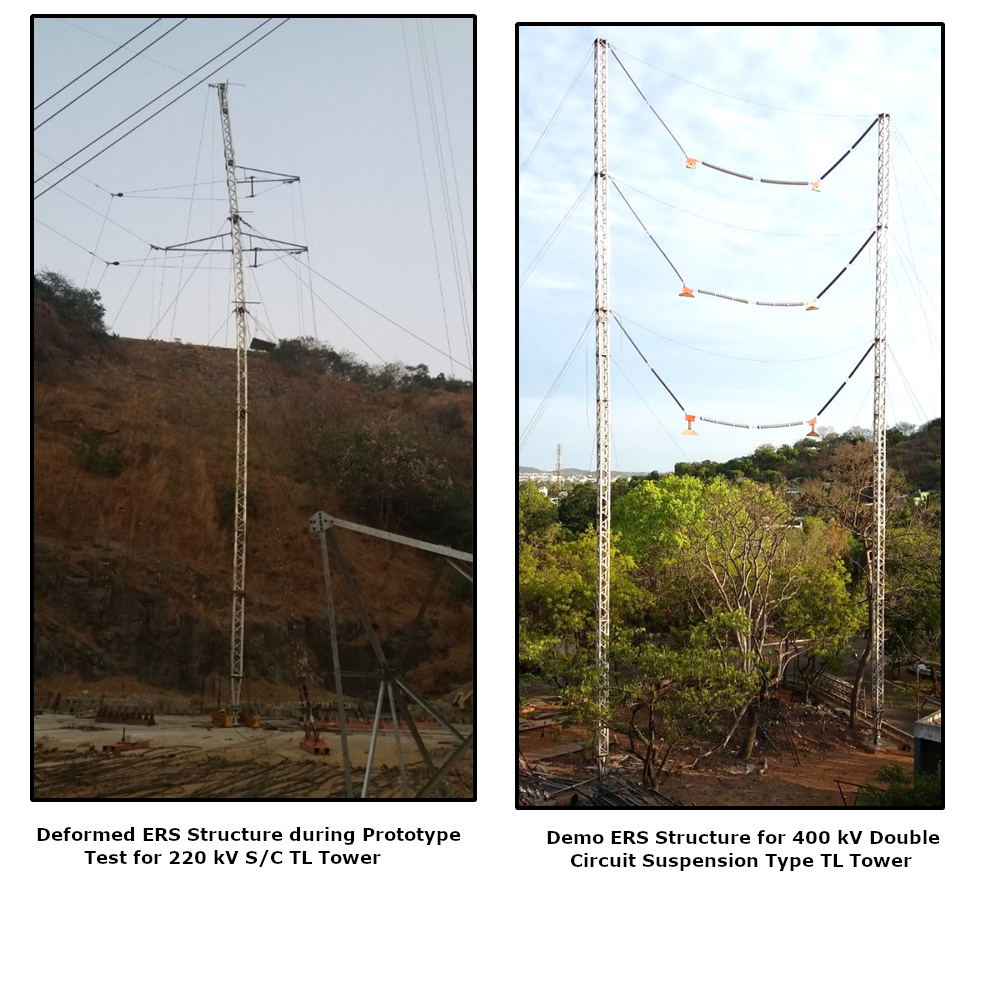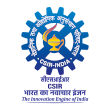Emergency Restoration System (ERS) – An indigenous technology for quick restoration of power
Emergency Restoration System (ERS) – An indigenous technology for quick restoration of power
Electricity is the backbone of the modern world. Electricity produced at power plants is transported over long distances through electric power transmission systems for eventual use by consumers. Transmission towers are the most vital component of the power transmission system. A transmission tower (also known as a power transmission tower, power tower, or electricity pylon) is a tall structure (usually a steel lattice tower) to support an overhead power line. In electrical grids, they carry high voltage transmission lines that transport bulk electric power from generating stations to electrical substations. The commonly seen utility poles are used to support lower-voltage sub-transmission and distribution lines that transport power from substations to electric customers.

Qualification Tests on ERS Panels as per IEEE Standard
Failure of transmission towers leads to an interruption in power transmission and creates havoc in the power transmission sector of any country. It has significant consequences on population, economy and public services. Natural disasters caused by high-speed wind or cyclones, floods, change in the course of a river, landslides in hilly terrain, earthquakes and man-made calamities may cause the failure of transmission towers. Weather conditions are unfortunately getting more extreme year after year in all parts of the world. Scientists predict cyclones, fires, torrential rains, floods, snowfalls, and ice storms will intensify in the decades to come. This will make electricity grids more vulnerable in developed as well as in developing countries. Permanent restoration of tower failures takes several weeks, resulting in interruption of power supply to the public and substantial monetary losses to the power companies.
Emergency restoration systems (ERS) are modular aluminium towers used to quickly restore power on damaged power transmission lines and facilitate scheduled maintenance work with a minimal power interruption. These are temporary structures that can be deployed typically in 2-3 days, as against several weeks required for permanent restoration of the towers. ERS holds high significance as occurrences of tower failures have increased over the past few years. In the international scenario, the concept of standardizing ERS was started in 1982 in the USA, and the IEEE guidelines were in place by 1995 that many other countries have already adopted. Still, ERS was not indigenously developed in India so far. ERS available in western and developed countries are patented technologies, and their procurement costs are enormous. Also, there is a limited number of manufacturers of ERS products globally.
CSIR-Structural Engineering Research Centre (CSIR-SERC), Chennai, has developed an indigenous ERS technology. A large number of ERS structures can be installed at considerably lower costs at the minimum possible time. The indigenous ERS technology developed by CSIR-SERC has a vast potential, which will help India's power transmission & distribution sector in several ways. The ERS developed at CSIR-SERC is unique, which consists of lightweight modules connected with an innovative connection system and supported by a novel two-pin gimbal joint and easy to construct foundation system. The ERS system is designed as a scalable system to 33 to 800 kV class transmission lines with all the salient features and is the first of its kind in India. The ERS system developed at CSIR-SERC satisfies the stringent test criteria laid by IEEE standard and consists of the following features:
- The cost of indigenous ERS is about 40% when compared to the imported ERS system
- The ERS modules are structurally more stable, with box sections
- The modules and accessories of ERS are proof tested for the design loads
- The ERS is verified with prototype test
- It is simple to fabricate, requires less hardware with the innovative easy to connect connection and easy to construct a foundations system
- The overall system is compact and yet economically affordable
- The ERS is easy to plan and use at a site
- Usage of lightweight materials makes it easy to transport to remote locations
- This modular system is easy to assemble and flexible enough to develop various configurations for different voltage class TL systems
The indigenous ERS technology developed by CSIR-SERC was recently transferred to M/s Advait Infratech, Ahmedabad, setting up an ERS manufacturing plant from where the indigenously developed ERS will be supplied to the Indian power transmission industry and the rest of the world. This is a patented technology and is available for technology transfer for other players in the market.


Dr. R.P. Rokade,
Senior Principal Scientist,
CSIR-SERC, Chennai

 Pensioners Corner
Pensioners Corner Screen Reader Access
Screen Reader Access Skip to main content
Skip to main content
























